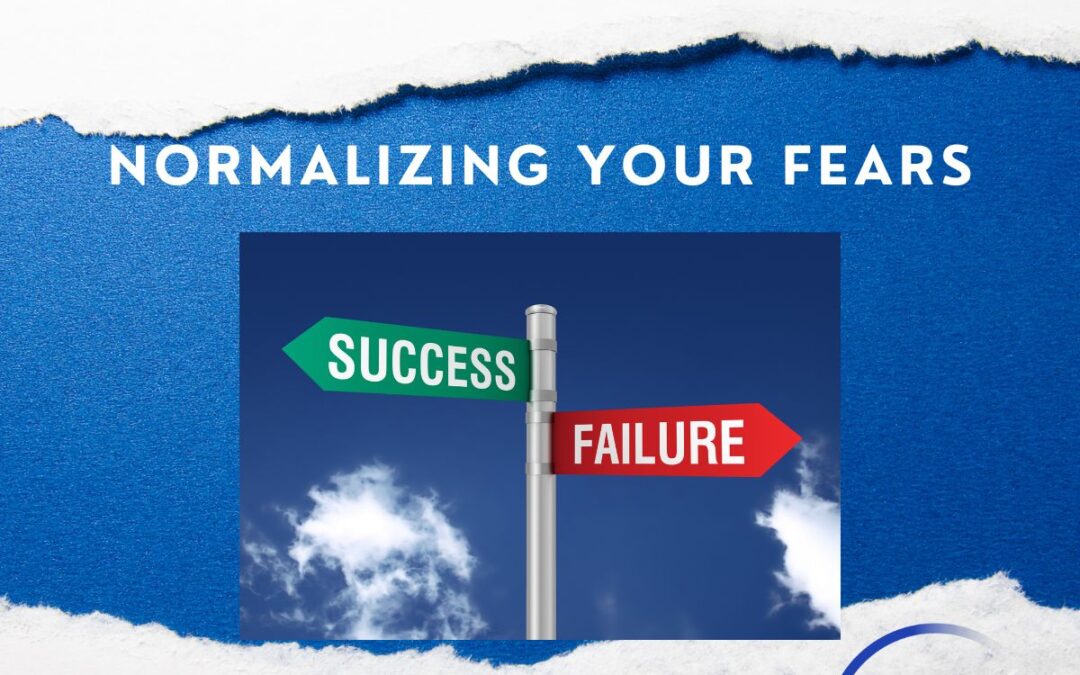Normalizing your Fears and Accepting Anxiety
With high stress levels leading to burnout, anxiety, and mental health on everyone’s mind, understanding your fear exponent quotient can be a powerful tool for achieving success. What exactly is the definition of fear exponent quotient? Fear exponent quotient is a hypothetical measure of an individual’s ability to engage with or avoid fear-inducing situations and risks. It can be a way to quantify how significantly fear influences one’s behavior, decision-making, and growth potential. The exponent part suggests that the impact of fear may increase disproportionately with certain factors, while quotient implies a ratio or measure of this impact. This phrase involves evaluating your approach to courage, risk aversion, and daring behaviors. Finding the right balance among these variables can significantly impact your personal and professional growth. Let’s get into how stepping out of your comfort zone and managing your fear exponent quotient can lead to meaningful advancements.
The Courage to Fail
Courage to fail is an essential element of personal and professional success. Many achievements and innovations result from individuals who were willing to face the possibility of failure. When you view failure not as a final outcome but as an important part of the learning process, you open yourself to opportunities that others might shy away from and step out of your comfort zone.
This mindset encourages experimentation and creative problem-solving. For example, tech giants like Google and Apple have thrived because they embrace a culture where failure is seen as just another step in the process rather than as a setback. When you adopt a similar approach, you encourage a mindset of resilience and adaptability. Instead of being paralyzed by the fear of failing, you learn to see it as a necessary component of progress, allowing you to step into new unknown areas with greater confidence.
Risk Aversion
There is a saying that people are either moving away from pain or moving towards pleasure. Risk aversion, when excessive, can be a significant obstacle to professional growth. It’s natural to be cautious about taking risks, but an overemphasis on avoiding them can lead to missed opportunities and professional stagnation. Those who consistently avoid risks may find themselves stuck in repetitive tasks and unable to leverage their full potential.
To understand this, it’s important to differentiate between rational risk assessment and irrational fear. If your hesitations are based on unfounded anxieties rather than actual data, you might be hindering your own growth. For example, if you’re hesitant to lead a new project due to fear of failure, you might be missing out on significant opportunities for advancement. By identifying and confronting these fears, you can gradually build the confidence needed to embrace new challenges and drive innovation in your role.
The Daredevil Approach
Being a daredevil can lead to impressive achievements, but it’s critical to balance these bold actions with strategic planning. The daredevil approach involves taking brave, adventurous steps while remaining mindful of potential risks and developing strategies to manage them effectively.
This balance requires evaluating the potential impact of your actions and making rational informed decisions. For instance, if you’re considering a major career move or running a high-stakes project, it’s important to weigh the potential benefits against the risks. By developing a cohesive plan and considering possible outcomes, you can take massive action steps with greater confidence. This allows you to be adventurous while maintaining control and direction, ultimately leading to more successful and impactful outcomes.
Finding Your Sweet Spot
To effectively manage your fear exponent quotient and take steps beyond your comfort zone, consider these practical strategies:
- Self-Assessment: Regularly assess your comfort zone and pinpoint areas where you feel hesitant or risk-averse. Understanding these areas allows you to focus on targeted growth and identify specific challenges to address.
- Set Incremental Goals: Break down larger objectives into smaller, manageable goals that challenge your abilities without overwhelming you. Achieving these incremental goals can build confidence and prepare you for tackling more significant risks.
- Seek Feedback and Mentorship: Connect with mentors or colleagues who have successfully overcome their own fears and challenges. Their insights and experiences can provide valuable guidance and support as you work through your own obstacles.
- Reflect and Adapt: This is key! Regularly reflect on your experiences, including both successes and setbacks. Use these reflections to adapt your strategies, learn from mistakes, and continuously refine your approach to risk-taking and growth.
To wrap things up, a growth mindset is key to controlling your fear exponent quotient. It shifts your perspective, transforming obstacles into valuable learning experiences. By embracing this mindset, you prepare yourself to tackle challenges with excitement rather than concern. Mentally using this approach not only allows you to step outside your comfort zone but also encourages your ongoing personal and professional development. It’s about seeing setbacks as just another checkmark in the process and pushing through fears to achieve growth. This perspective not only drives personal success but also creates a status quo where creativity and strength thrive, leading to a more fulfilling and dynamic career.
Did I miss something in this article? I’d love it if you could find me on social or share this article with someone else. Let’s continue the conversation!
#EmbraceGrowth #FearlessLeadership #GrowthMindsetMatters #PushYourLimits

